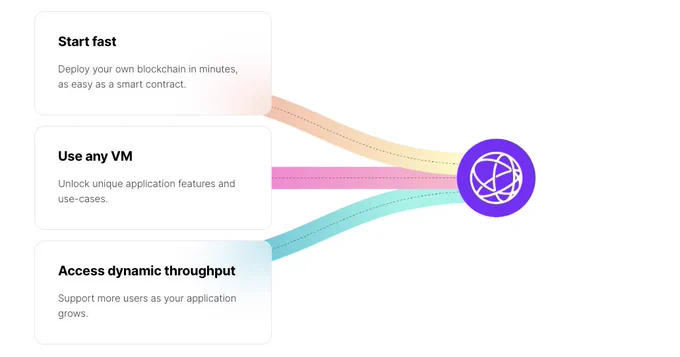The unique design of Celestia makes it highly beneficial for developers as, using its modular architecture, they can deploy a blockchain as easily as a smart contract. Celestia provides consensus and security on-demand, enabling anyone to deploy a blockchain without the overhead of bootstrapping a new consensus network.
The bootstrapping of new blockchains is an effortless process without the imposition of considerable time or monetary costs.
Developers are also free to choose their own execution environment, as Celestia does not impose any execution logic. While initially focused on the EVM and Cosmos SDK, Celestia plans to support all kinds of rollups.
While popular blockchains like Ethereum are struggling with scalability issues, Celestia makes it simple with data availability sampling. Because Celestia does not validate transactions, its throughput is not bottlenecked by state execution like traditional blockchains. Celestia’s throughput scales with its number of users.
Blockchains built on top of Celestia do not rely on honest majority assumptions for state validity either. As such, all of them can interoperate with the highest security standards.
Celestia is basically giving rise to a new paradigm that is enabling new chains to be constructed in ways that were not previously possible. This translates to vast possibilities for individual chains and the main modular stack they are a part of. Different types of modular blockchains here can work collaboratively, varying in their purpose and architecture.
